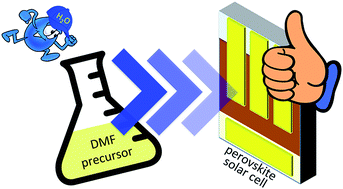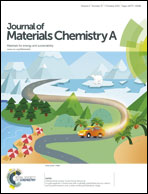The impact of precursor water content on solution-processed organometal halide perovskite films and solar cells†
Abstract
Perovskite solar cells are well known to degrade under post-fabrication stress, among others due to humidity as a consequence of the hydrophilic properties of the organic cation. On the other hand, it has been shown that the controlled addition of water molecules during the formation of the perovskite (while starting from water-free precursor materials) yields larger perovskite crystals with less defects, resulting in better device performance. One aspect still missing in this line of research is the water content of the perovskite precursors themselves: although most of them are prepared with anhydrous solvents as a precaution towards premature degradation, it is still unclear whether or not the precursors really need to be dry. In this paper, the impact of the perovskite precursor's water content up to 10 vol% is investigated, in the form of a detailed study regarding the opto-electronic and morphological properties of the resulting films and devices. It is found that only modest changes occur in the films that do not affect the final photovoltaic performance, thus relaxing the conditions for large-scale production of this upcoming photovoltaic technology.


 Please wait while we load your content...
Please wait while we load your content...